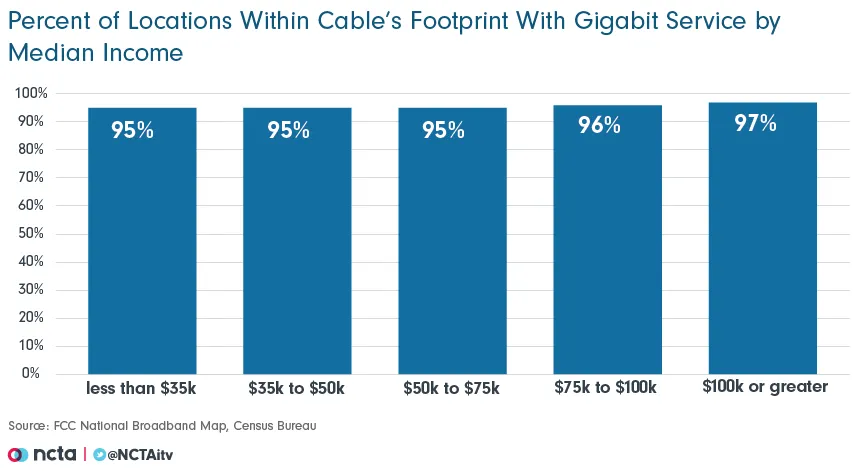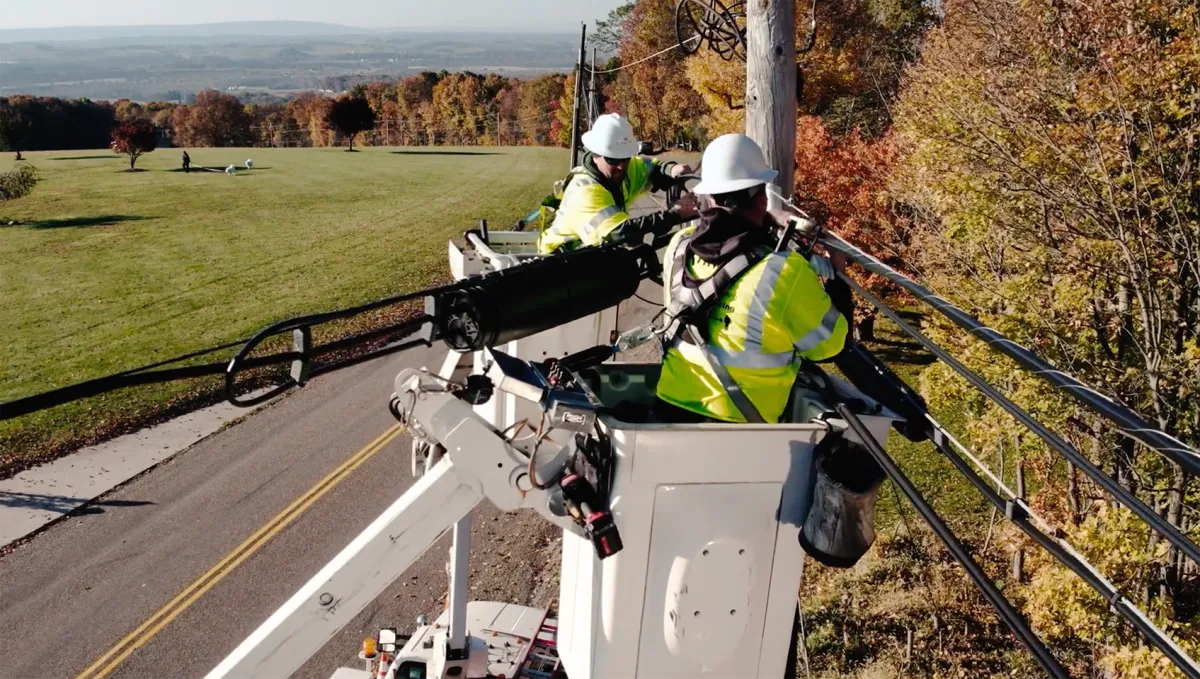Before the U.S. can accomplish the important task of connecting all Americans, it is important to understand where broadband already exists in both rural and urban areas. Having accurate data about existing broadband networks will enable billions of federal and state funding and other resources to be dedicated where they are needed most (communities without service).
Through decades of investment and billions of dollars in private capital, cable providers have built high-speed networks across the country and have continuously upgraded their technology and the quality of their service offerings.
The Takeaway: The newly released FCC maps are just a first iteration and need to be further refined through the challenge process. However, one clear takeaway from the FCC data is that cable providers deploy gigabit service equitably regardless of income level or racial composition.
- Previous NCTA analysis of FCC and Census Bureau data highlighted how cable broadband networks have been deployed equitably in urban centers, and the capabilities that are available.
- The new FCC National Broadband Map data reinforces that cable operators have deployed and upgraded high-speed networks within their footprints regardless of demographics, in both urban and rural areas.
The Data:
- As of June 2022, gigabit broadband service is available from cable providers to 96% of the locations they serve.
- These offerings are widely available in all areas regardless of household income.
- Between 95% and 97% of all locations in cable provider service areas can access gigabit speeds no matter what their household income is.
- Between 95% and 97% of all locations in cable provider service areas can access gigabit speeds no matter what their household income is.
- There is virtually no difference in cable gigabit availability based on the racial composition of a given area.
- Similar to income levels, at least 95% of all locations in cable provider service areas can access gigabit speeds regardless of race or ethnicity.

Bottom Line: As the cable broadband industry forges ahead with next generation 10G networks, government data shows that providers have a track record of deploying their fastest services ubiquitously to communities they serve regardless of income level or race.
While there is more work ahead in connecting remaining unserved communities and bringing broadband to all, smart, targeted funding combined with cable’s decades of experience in building powerful networks throughout our communities can help America bridge the digital divide.








